Welcome!
by: Khadijah Abston
This website will provide important information about how to use technology the appropriate way. There are tips and tricks, information, and guidelines to follow when it comes to the use of technology. Technology is a fun way to improve your learning experiences. Technology can open doors to different avenues and allow access to wonders unknown. When you are using technology and using the internet for multiple reasons, users should be familiar with digital citizenship. Throughout this website, you will uncover information about digital citizenship that will allow the reader to understand the correct actions to use on the internet.Each section gives insight into the areas that are the most important. Sit back, take notes, and read along to learn about digital citizenship.
Digital Citizenship
Digital Citizenship is the impact that is made once you interact on the internet. Digital citizenship can be considered as your individual footprint that is associated with your internet usage. There are several elements to digital citizenship.
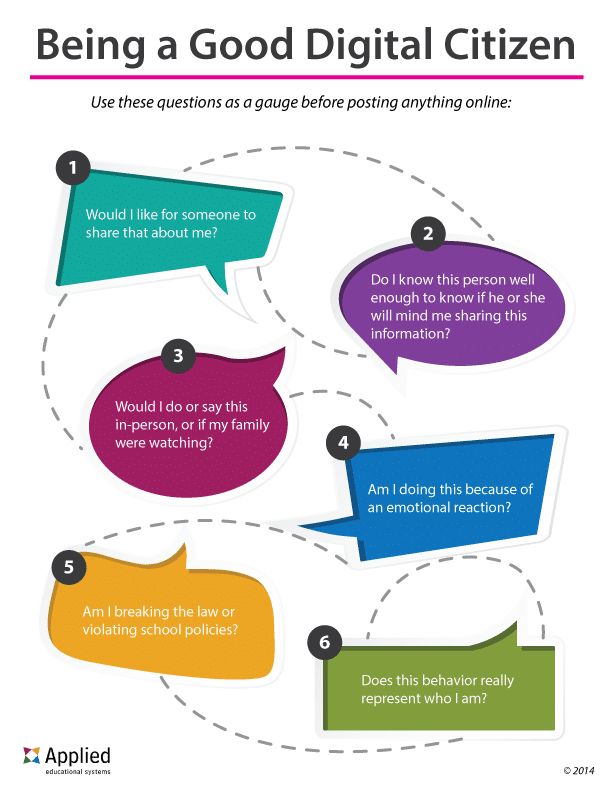
Digital Communication

This form of communication is found through phones, texting, and social media correspondenses. When you are communicating across technology, you should be courteous, polite, and engaging. The individuals that you are communicating with are people just as you are. Cyberbullying is a form of negative communication that is harmful and illegal in numerous states. When digitally communicating with someone, put your best foot forward to have a polite conversation.
Digital Literacy

Digital literacy is the appropriate use of technology to be implemented as a form of communication or evaluation. When you are using digital literacy there is the connections of tactile and cognitive skills being addressed.
To find out more about digital citizenship, visit these websites:
- Edutopia: What Your Students Really Need to Learn about Digital Citizenship
https://www.edutopia.org/blog/digital-citizenship-need-to-know-vicki-davis
- Scope and Sequence: Common Sense Education
https://www.commonsense.org/education/scope-and-sequence
- CyberWise: What is Digital Citizenship
http://www.cyberwise.org/what-is-digital-citizenship
Netiquette
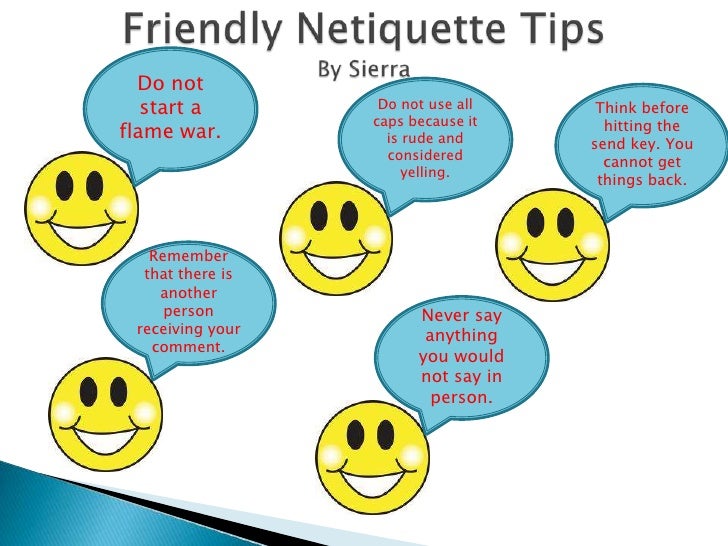
Netiquette is the use of digital etiquette. Netiquette embods the correct way to use technology when an additional person may be involved. Correct grammar should be used, individuals emotions should be considered, think before you act, and time management are all essentials to netiquette. To understand more about thow netiquette is important in the digital world, the digram below from itsallaboutculture.com, displays the basic guidelines of netiquette. Once correct netiquette rules have been followed the internet user will use thier digital footprint in a more appriate way. Here are several thoughts to always consider before communicating on the internet.
#1 Act Appropriately
#2 Avoid Embarrasing Others
#3 Think Before You Click
#4 Grammar is Always Important
#5 Do to Others, What You Would Want Done to You

itsallaboutculture.com
For additonal information, visit the following webistes:
- The Core Rules of Netiquette
https://sites.google.com/site/emilyrbach1/domain-2-classroom-environment/2c-managing-classroom-procedures/netiquette-poster---canva
-
Netiquette and Online Ethics: What Are They?
https://www.webroot.com/ca/en/home/resources/tips/ethics-and-legal/ethics-netiquette-and-online-ethics-what-are-they
-
Netiquette: Rules of Behavior on the Internet
https://www.webroot.com/ca/en/home/resources/tips/ethics-and-legal/ethics-netiquette-and-online-ethics-what-are-they
Internet Safety Tips

Staying safe on the internet is of upmost importance. Here are five tips to help stay safe on the internet.

#1 Do Not Send Pictures to Strangers
#2 Do Not Download Without Permission
Items could contain viruses
#3 Always Keep Adults Updated
If somone strange tries to interact with you
If you clicked on a wrong site
#4 Do Not Give Out Personal Information
Home Address
Phone Number
School Name
Full Name
#5 Do Not Give Out your Passwords
Only give them to parents and trusted adults

For additional information, visit these websites:
- Kids Safety.com- Kids' Rules for Online Safety
http://www.safekids.com/kids-rules-for-online-safety/
- New York Public Library- Internet Safety Tips for Children and Teens
https://www.nypl.org/help/about-nypl/legal-notices/internet-safety-tips
- Kids Health- Internet Safety
https://kidshealth.org/en/parents/net-safety.html
Copyright, Plagiarism, and Fair Use
You are responsible for your actions on the internet. Therefore, you are responsible for knowing the laws that are set in place to protect individuals on the internet. There are laws for copyright, plagiarism, and fair use on the internet.

According to Dictionary.com, copyright is "the exclusive right to make copies, license, and otherwise exploit a literary, musical, or artistic work, whether printed, audio, video, etc.: works granted such right by law on or after January 1, 1978, are protected for the lifetime of the author or creator and for a period of 70 years after his or her death."

According to Webster's Dictionary, plagiarism is "to steal and pass off (the ideas or words of another) as one's own : use (another's production) without crediting the source."
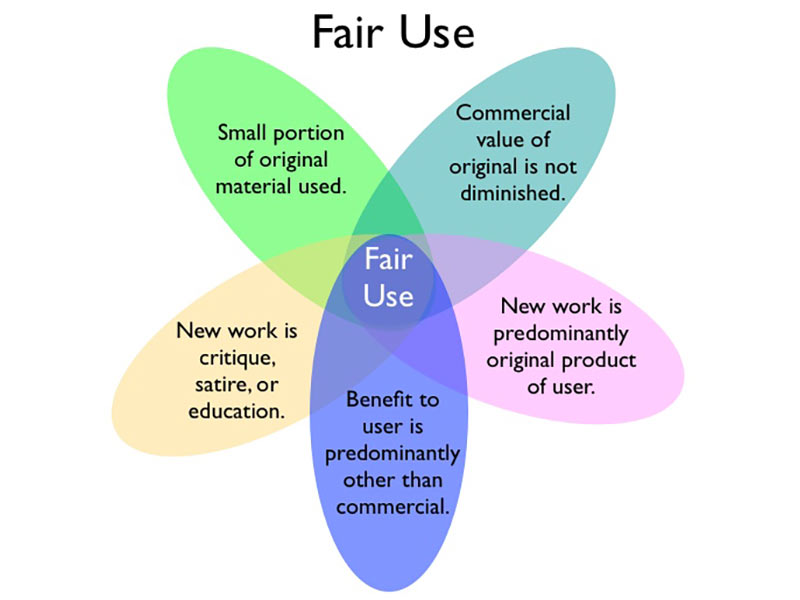
Copyright.gov defines fair use as "a legal doctrine that promotes freedom of expression by permitting the unlicensed use of copyright-protected works in certain circumstances.
To avoid plagiarism and help with citing sources visit: http://www.bibme.org/ or http://www.easybib.com/
To learn more about this topic, visit these websites:
- Teaching Copyright
https://www.teachingcopyright.org/
- Kids Health- What is Plagiarism
http://kidshealth.org/en/kids/plagiarism.html
- Kidz Search-Fair Use
https://wiki.kidzsearch.com/wiki/Fair_use
Digital Equity Classroom

Equity within the classroom is viewed in a number of different ways. Digital Equity is the access that all students equally have to technology that will promote thier own personal success. Every student does not have access to laptops, tablets, phones, ipads, and computers at home but at school, the students do all have the same access to technology. To make sure that each student recieve that equivalent amount of access to this technology falls in the hands of the administration and educators. Students should have equal access, equal amounts of time, and equal opportunties to make themselves success with the technology time that everyone is allotted. Digital Equity inside the classroom gives each student the opportunity to succeed at thier own level. Students will need to be educated on not only how to use the devices but also on how the devices can be benefical in their educational carrer.
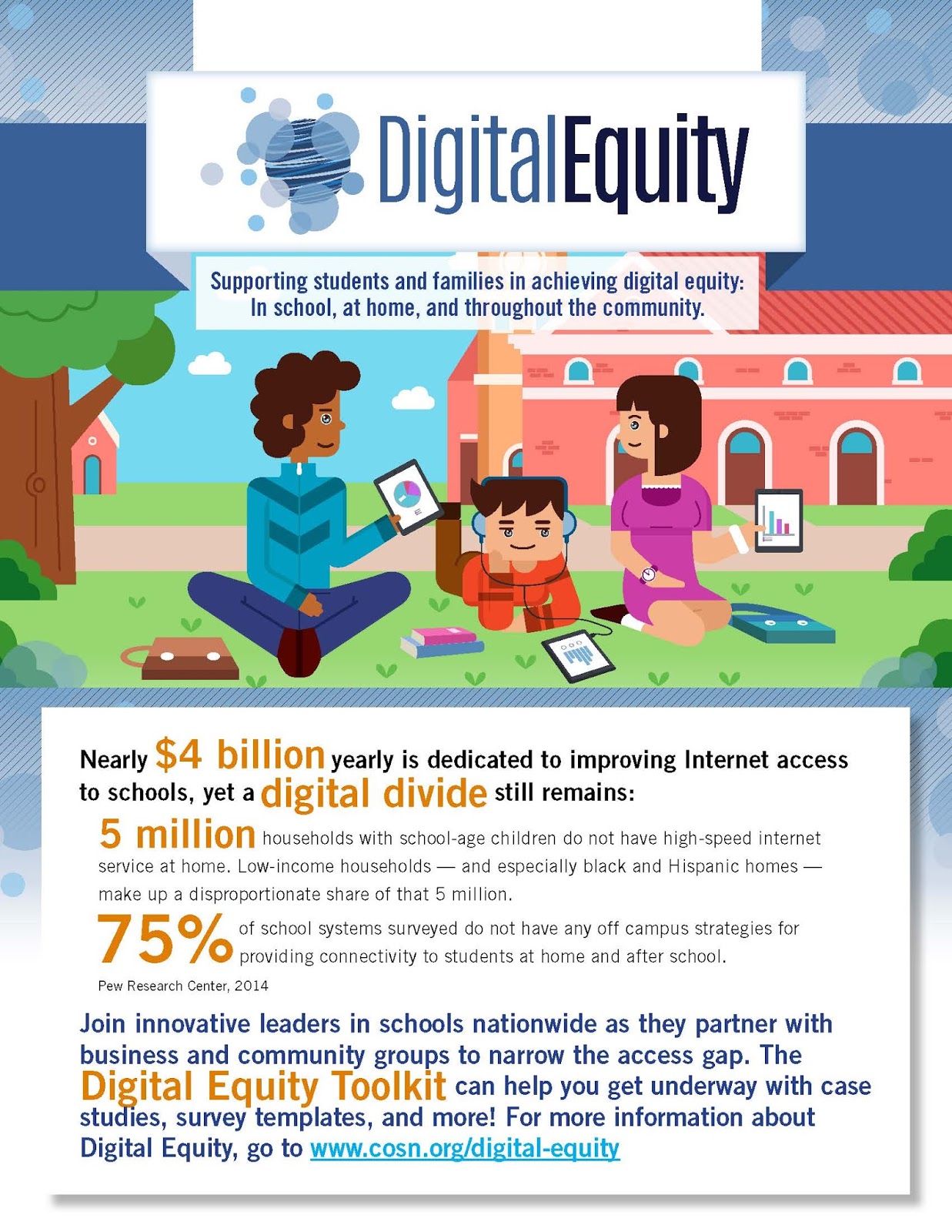

For more information, visit these websites:
- NEA Today- Digital Equity in Schools
http://neatoday.org/tag/digital-equity-in-schools/
- Digital Equity
http://digitalequityforlearning.org/
- Naesp- Digital Equity: The Civil Rights Issue of Our Time
https://www.naesp.org/principal-marchapril-2017-technology-all/digital-equity-civil-rights-issue-our-time
Technology Rules and Technology Use Policy
Knowing when you use your phone or being aware of your school or works digitial policy. When at school, technology is to be used for education and research purposes. When you are at work, technology is for business and communcation purposes. At the particular area where you acess your technology, it is being monitored or the data is being stored when you are using it for the various purposes. For this reason, it is better to use only the technology for its inteded purposes. When you want to complete personal activities, use your personal devices away from school or work.
Technology Rules in the classroom typically cosist of :
#1 No Foods/ Drinks
#2 Clean Hands
#3 Stay Seated
#4 Eyes on Screen
#5 Be Responsible
These particular rules are set in place to give student simple guidelines that will prevent students from making a number of digital mistakes. Students that are not being responsible are not using digital citizenship. Students who are not being seated will disturb other students doing thier best to work. Students are capable of following these simple rules in order to make thier technology usage successful. Many teacher place posters around thier walls to give students reminders of the correct behavior when dealing with technology.

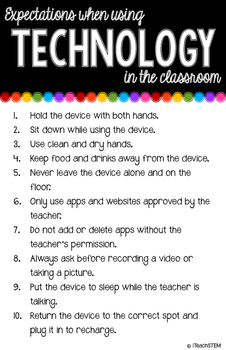

For more information, visit these websites:
- Whoo's Reading the Blog- 10 Classroom Rules for Using Technology
http://blog.whooosreading.org/10-classroom-rules-for-using-technology/
- Gradelink- 6 Tips for Managing Technology in the Classroom
https://www.gradelink.com/blog/6-top-tips-for-managing-technology-in-the-classroom
- Office of Educational Technology- Student Centered Acceptable Use Policy
https://tech.ed.gov/stories/student-centered-acceptable-use-policy/
Resources
http://itsallaboutculture.com/wp-content/uploads/2013/10/ntiqet.jpg
http://dentsuaegisnetwork.com/us/media
https://i.pinimg.com/236x/85/bf/76/85bf76e08b81745d67b8af3ab96f70ee--classroom-rules-classroom-ideas.jpg
http://www.cartoonbrew.com/wp-content/uploads/2016/02/fairuse-info.jpg
https://s-media-cache-ak0.pinimg.com/736x/2a/5d/9b/2a5d9bac8ba822ad16e96946a0ac8c7f.jpg
http://www.m-magazine.co.uk/wp-content/uploads/2013/05/Copyright-symbol-large.jpg
http://www.efaqt.com/academy/wp-content/uploads/2016/02/digital-literacy-criteria-8-1024x547.png
https://www.aeseducation.com/blog/teaching-digital-citizenship-in-cte
https://ecdn.teacherspayteachers.com/thumbitem/Technology-Use-Classroom-Expectations-Rules-11x17-Posters-2399059-1499343769/original-2399059-3.jpg
http://www.overtonprimary.co.uk/files/images/online2.jpg
http://blog.whooosreading.org/wp-content/uploads/2015/07/Image-1.jpg
https://3.bp.blogspot.com/-lrMwHs8s6d4/VzMxH4RXlNI/AAAAAAAAxrs/kgW3bY4NttsxhZNHTYQwtbQ34BoQFF12ACLcB/s1600/April%2B3%2BDE%2BInfographic%2B_Page_1.jpg
https://1.bp.blogspot.com/-6m3wIQ3Sf7k/VzMxKhlLHCI/AAAAAAAAxrw/c22TAwC5CIESZIO4G0p83h6fBFeTv4GEACLcB/s1600/April%2B3%2BDE%2BInfographic%2B_Page_2.jpg
https://sites.google.com/site/digitalcitizenshipfor2016/academics
https://i.pinimg.com/736x/fd/33/46/fd3346a84400dda7ae06e4dfaf387f78--safe-internet-internet-safety.jpg
https://sites.google.com/site/emilyrbach1/domain-2-classroom-environment/2c-managing-classroom-procedures/netiquette-poster---canva
http://1.bp.blogspot.com/-i7oGMI_rEDM/U5g3i3nRgqI/AAAAAAAACJI/5YpQ8aaDxSA/s1600/internet-safety_stop-think-connect.png
